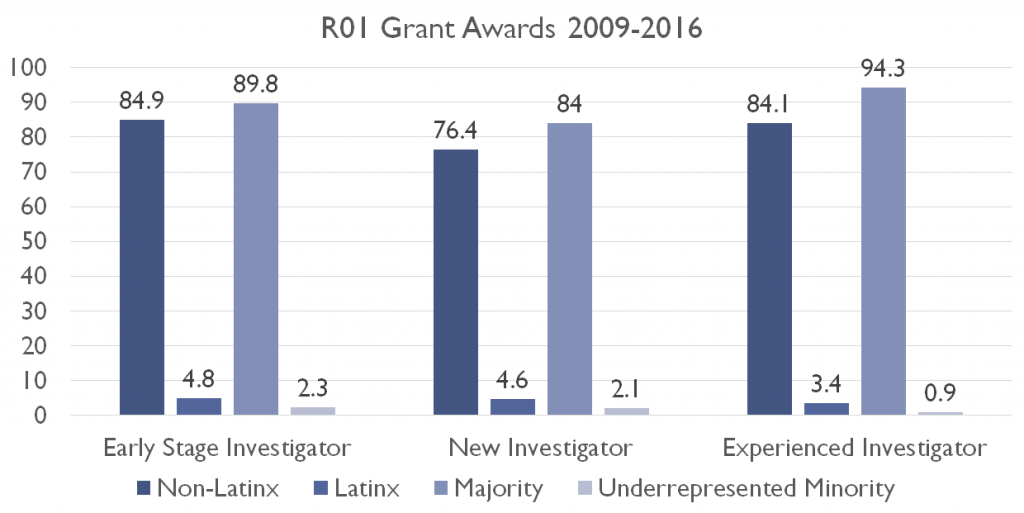Please find this post at: https://clairekampdush.com/2019/05/31/health-and-social-science-for-all/
Recently, I have been reflecting on the state of health and social science in the US.
How competitive is it to get an NIH grant?
The number of submissions to the National Institutes of Health has grown continually over the past 20+ years; in 2018, NIH received more than 55,000 grant applications, of which about 20% were funded, though the success rate varies by NIH institute.
Retrieved from: https://report.nih.gov/nihdatabook/report/20
Who is actually receiving grants?
NIH’s Data Book makes it easy to see the breakdown of grant awardees by gender.

Retrieved from: https://report.nih.gov/nihdatabook/report/172
Thus, about 70% of R01-equivalent (NIH’s main grant mechanism for large research projects) are awarded to men. I tried to find the numbers broken down by race/ethnicity in NIH’s Data Book, but the numbers were not available. Nikaj, Roychowdhury, Lund, Matthews, and Pearson (2018) examined R01 grant awards between 2009 and 2016. They found that less than 5% of awardees identified as underrepresented race or ethnic minorities.

Early stage investigator = 10 years or less from terminal degree; New investigator = never been awarded an R01; Experienced investigator = has held an R01. Underrepresented Minority = investigators who identified as African American/Black, American Indian or Alaska Native, Native Hawaiian or Other Pacific Islander. Data source: Nikaj, Roychowdhury, Lund, Matthews, & Pearson, FASEB Journal, 2018. doi: https://doi.org/10.1096/fj.201800639
Thus, the majority of NIH-funded biomedical, health, and social science research grants are awarded to men who are non-underrepresented; or primarily white men. That is, the nation’s NIH funded research agenda is being primarily driven by white men.



